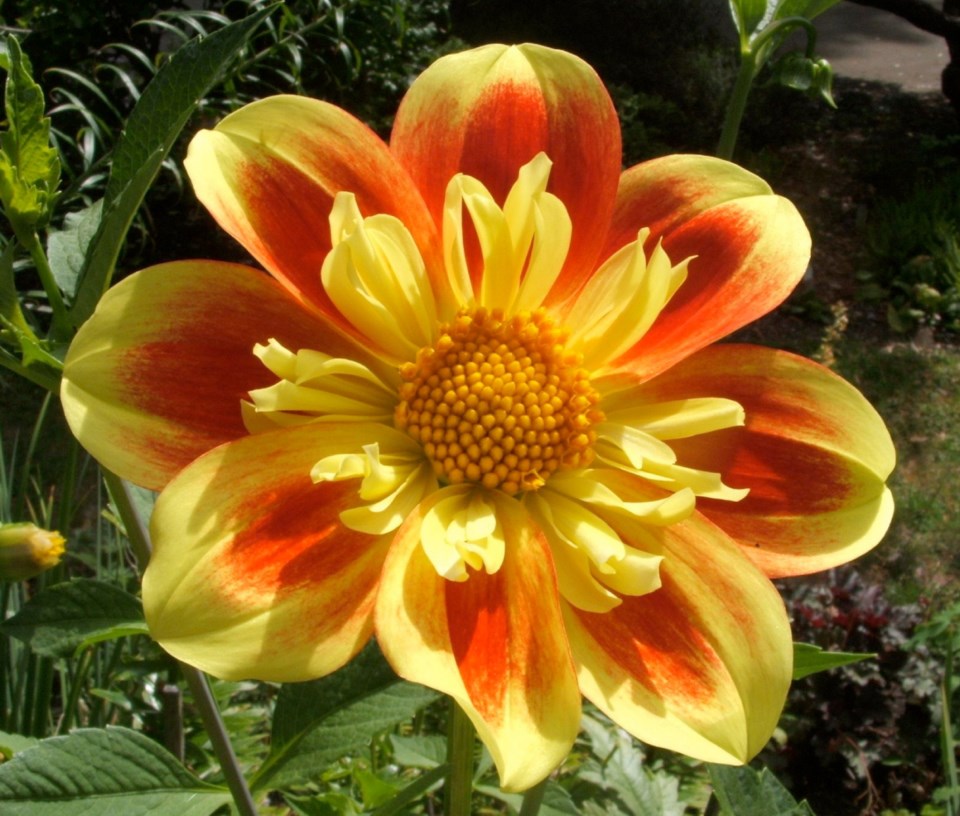Dahlias are garden gifts that keep on giving. The plants churn out flowers from July through to frost, and in most sites and soils they can be treated as hardy perennials, requiring dividing only every few years.
Dahlias have history. The plants we know are thought to have evolved from European-bred descendents of species native to Mexico. One of those species is likely Dahlia coccinia, still available from Plant World Seeds. Yet breeding may have begun long before the dahlia’s introduction to Europe. More than one historical source states that at the time of Spain’s conquest of Mexico (1519-24) hybrids, some double-flowered, were already being cultivated in Aztec gardens.
This new flowering plant came to Europe in 1789 and the plants were grown and bred at the Royal Gardens of Madrid. When a seedling emerged that produced semi-double flowers, it was named Dahlia pinnata, in honour of Dr. Anreas Dahl, a Swedish botanist and pupil of Linnaeus, who is famous for creating our plant classification system.
Today, there are dahlias to suit every taste. Among the plants are dwarf bedding and container types to giants more than two metres tall. The flowers range from soft-hued to garish, demure to bombastic, tight and tailored to loose and madcap.
To make sense of their great diversity, dahlias are grouped into classifications such as single-flowered, waterlily, decorative, cactus, pompom and so on to specify the flower style.
Types known and sold as “dinner-plate” dahlias do not constitute a flower classification, but are varieties from different classifications with huge, imposing blooms 18 to 30 cm across. These loom large on the garden centre scene, such as the flashy orange and yellow Show ’N’ Tell and the new, wildly fringed and fully double Myrtle’s Folly in peach-pink and cream.
My father’s favourite dahlia was Park Princess, a longtime (1959) popular classic, low-growing bedding dahlia with bright pink, double blooms, spiky-petaled in the cactus style. He used the plants as a pretty plot edging in his Lochside Drive garden.
I’m particularly fond of collarette dahlias. They’re not at all flamboyant, but the lacy blooms have a simple charm that appeals. Collarette dahlias have an outer ring of flat florets and an inner ring of smaller florets (the “collar”), often in a different colour, surrounding the bloom's centre. I added three of these, from Ferncliff Gardens, to this year’s garden — Lemon Kiss in a lovely combination of yellow and white, Raeann’s Torch, showy in red and yellow, and Ferncliff Showoff, a confection in rose purple and white, described by the grower as “my signature flower.”
Ferncliff Gardens has been a family operation in Mission since 1920 and published its first mail order catalogue in 1923.
Seeds: Dahlias are easy to grow from seed, started indoors in March. I have my eye on a dwarf (50 cm) collarette blend in orange, scarlet and yellow called Sunny Reggae in the Stokes Seeds catalogue. Chiltern Seeds, in its usual entertaining fashion, describes metre-tall Bishop’s Children as suitable “for lovers of bright, garish, vulgar, striking, clash-with-everything, gaudy colours (as we all do secretly, but never admit it).” This mixture produces single flowers over dark bronze foliage. Seed-grown dahlias form clumps.
Growing: Give dahlias a place in the sun with a fertile, humus-rich soil that drains well. Lime acidic soils. Plant tubers 13 to 20 cm deep, depending on the size the plant will be. Stake tall varieties. Keep gathering stems for wonderful cut flower bouquets and clear off dead blooms regularly to keep fresh flowers coming along. When frost blackens the foliage cut the stems down, mark the sites, and mulch over top with soil or compost for the winter.
Pronunciation: Most of us say DAY-lia, though sticklers for perfection will prefer DAH-lia, to reflect the pronunciation of Dahl’s name.
GARDEN EVENT
VHS meeting. The Victoria Horticultural Society will meet on Tuesday at 7 p.m. in the Garth Homer Centre, 813 Darwin Ave. In his presentation International Historic Gardens, Jeff de Jong will take VHS members on a tour of the most exquisite and memorable gardens ever created. He will share his observations on how the world’s great gardens have influenced today’s designs and how new ideas can be gleaned from those of the past. A seasonal celebration will follow. Members are asked to bring finger food and table decorations to be set out between 6:30 and 7.



